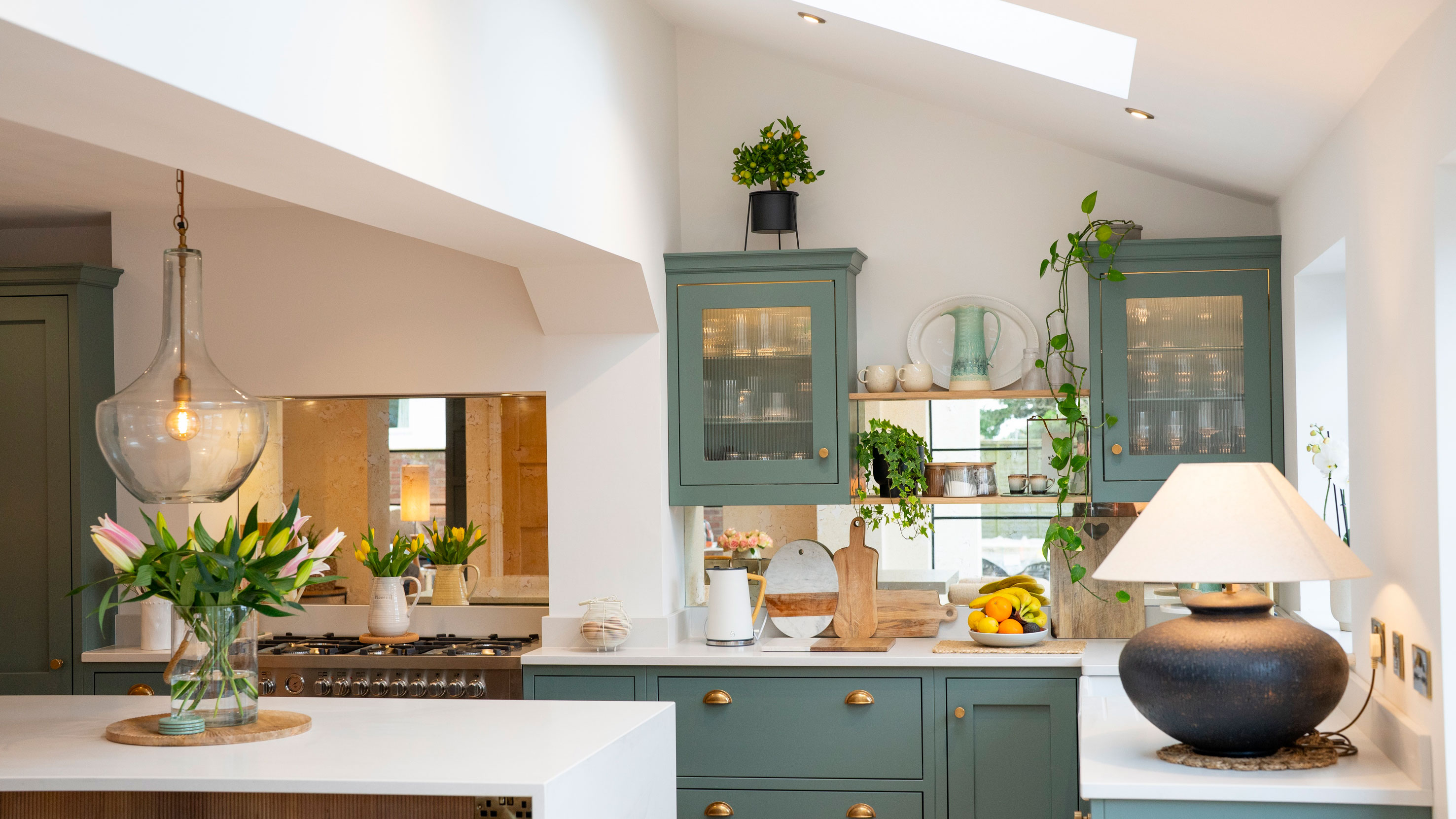
While your kitchen design needs to be tailored to your needs, there are some kitchen lighting rules well worth taking note of if you want to ensure this is a space that is both stylish and practical.
'Lighting is the only element in interior design that can be changed at the touch of a button,' explains Sally Storey, creative director of John Cullen Lighting. 'In a kitchen, where you want to transition from a bright environment during the day to a much softer and more atmospheric space at night, it is essential to create a flexible scheme so your kitchen is the welcoming heart of your home.'
We asked some top lighting experts for the rules they always follow when it comes to kitchen lighting ideas and for tips designing a lighting scheme for what is, so often, the heart of the home.
Kitchen lighting rules
Before embarking on any kind of lighting ideas, it is vital to understand how to plan kitchen lighting and think about how you want to use the space.
'Always inspect the kitchen plan first and run through the various scenarios,' advises Claire Pendarves, independent lighting consultant for The Soho Lighting Company. 'How do you want it to feel on a rainy Monday morning when you’re getting ready for school or work? How will you create atmosphere when you’re having a chilled evening, cooking and chatting while the children do their homework at the kitchen table?
'It’s never too early to plan your kitchen lighting, but the functional lighting layout and fittings should be the first consideration,' continues Claire. 'The feature lighting can be selected a bit later.'
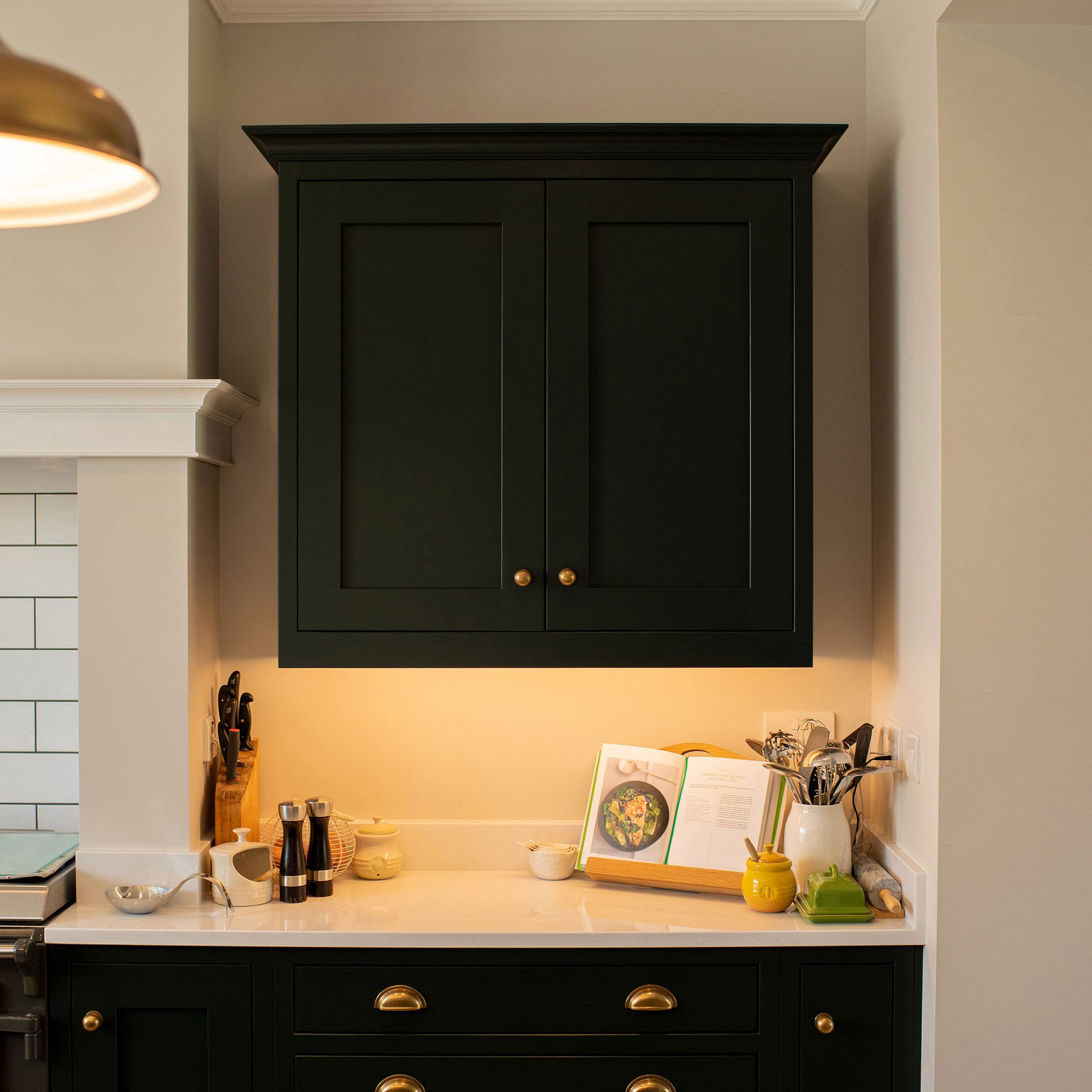
1. Avoid setting downlights in a grid
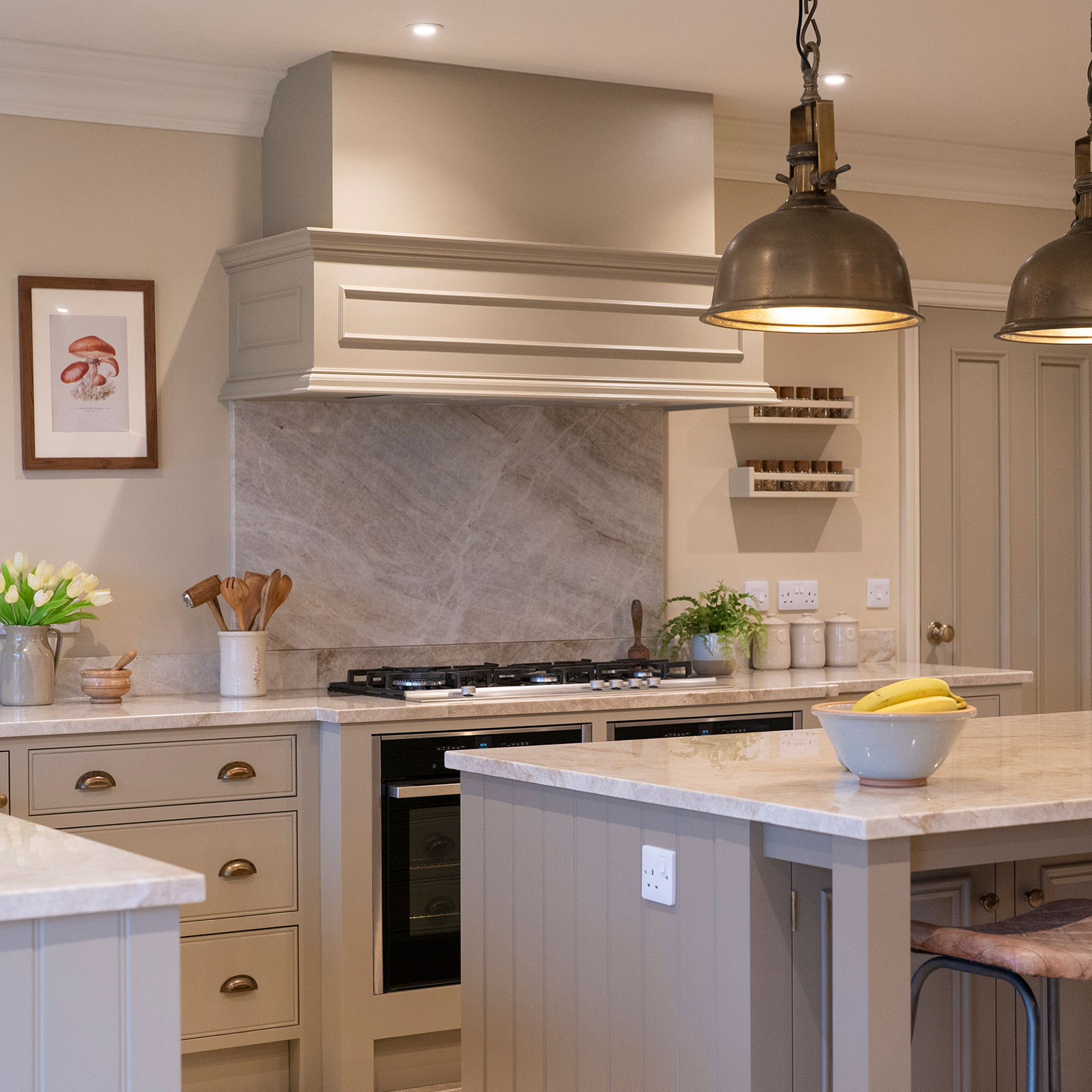
Perhaps more than in any other room of the house, the positioning of your lights is absolutely crucial when it comes to the kitchen. If there is one thing that all the experts we spoke to agreed on it was that a grid of downlights is one of the biggest kitchen lighting mistakes out there.
'Do not put your downlights in a grid. This will provide a flat, even light which will not effectively illuminate the space,' warns Sally Storey. 'Instead, place downlights to highlight features such as artwork, or washing down the front of cupboards to reflect light back into the space and for task lighting over an island.'
'So often downlights will be placed in a grid in the ceiling without considering the layout of the kitchen,' agrees Claire Pendarves. 'This can often result in light being focused down on the cook’s head and casting the worktop in shadow. It’s an unpleasant and glary situation for the person cooking and is totally impractical.
'Downlights should be placed directly over the actual worktop and ideally should be low glare,' continues Claire.
The beauty of these smart LED downlighters is that they are completely adjustable with a 120° beam angle that means you can direct the light to wherever it is needed.
2. Design a layered lighting scheme
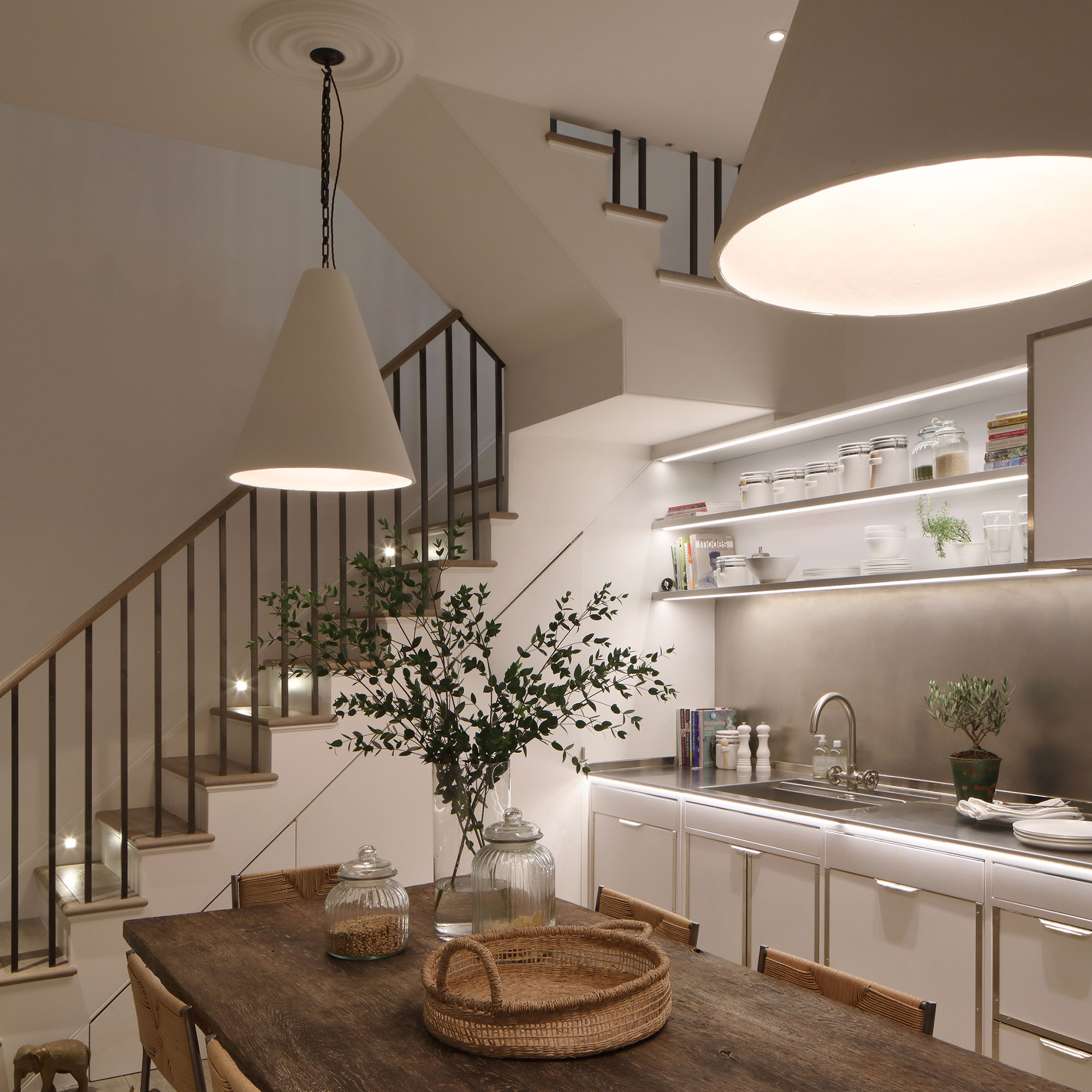
It isn't just kitchen ideas that can benefit from a layered lighting scheme. In any room, using various light sources to create a layered effect is the very best way to ensure that the space can adapt to both the levels of natural light it is receiving as well as the activity that happens to be taking place.
'Don't just use downlights to light a kitchen,' says Sally Storey. 'By layering light you will add more interest and impact. Consider using LED lights in the plinth of your units or central island to provide a gentle wash of light across the floor. If an island unit is on legs, you can create the impression it is floating by using LEDs underneath it. Alternatively, add something like John Cullen's 1w Lucca uplights to a dark corner or to light an arch or doorway.'
'The aim is to create a layered lighting scheme, combining task, ambient and accent lighting to meet different needs,' explains Molly Chandler, designer at Willis & Stone. 'Task lighting, like under-cabinet LEDs, can be installed over countertops and cooking areas to ensure clear visibility for food prep, while ambient lighting, such as recessed ceiling lights or pendants, provide general illumination. Accent lighting, such as inside glass cabinets, can be added to highlight design features and add depth to the overall design.'
'A layered lighting scheme will allow you to utilise different lighting sources throughout the day, rather than having to choose just one main lighting option,' adds Nicolle Whyte, design director at Olive & Barr. 'Statement wall lights positioned above the counter add a design feature, while downlights also provide task lighting. For added flexibility, opt for an Anglepoise light which can simply be manoeuvred to areas you need most – ideal when preparing food or drinks.
'Another great option is under-cabinet lighting which can easily be incorporated – opt for LED strips or spotlights for a safe energy-efficient and purse-friendly solution,' continues Nicolle. 'If you have a cosy corner in your kitchen where you enjoy winding down with a book in the evening or sipping an early morning coffee, consider adding a table lamp. A traditional lamp with a fabric shade can bring a warm homely feel, while a sleek, modern design can add contrast to a more traditional kitchen.'
This traditional-style lamp would look perfect on a timber or stone worktop alongside classic Shaker units. The shade features a digitally printed interpretation of an antique Swedish tapestry that lends it instant character.
With its simple form and finishes, this lamp could slide into any kitchen scheme, yet it can also be customised. The removable base means you can can add a decorative display into the glass element.
The perfect lamp to highlight any brass finishes you have elsewhere in the kitchen, for example a kitchen tap or cabinet handles. The velvet drum shade adds a luxurious finish and plenty of warmth too.
3. Really focus on great task lighting
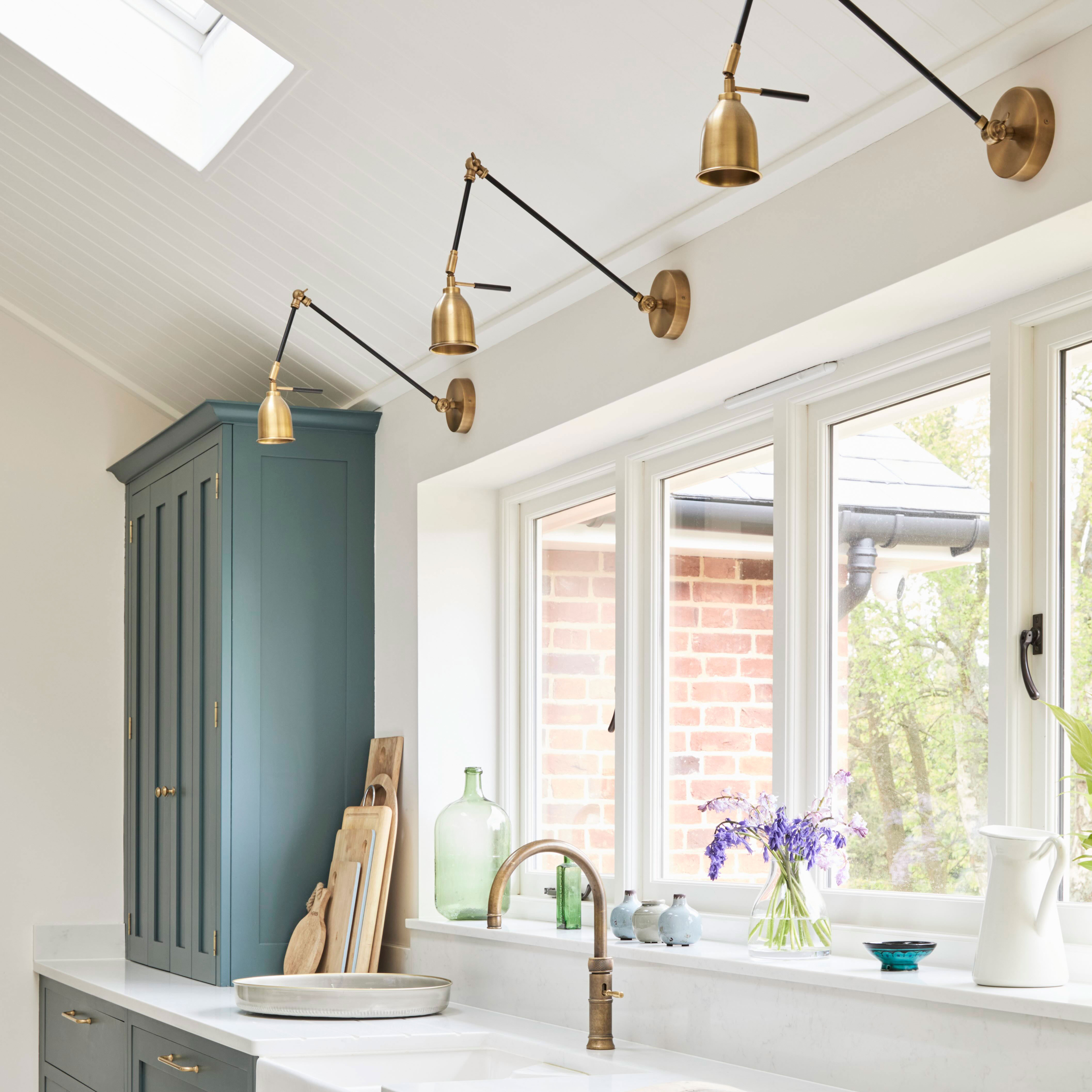
Task lighting plays key role in kitchen layouts, allowing you to carry out food preparation efficiently – mood lighting might be great for hosting an intimate dinner party, but is totally impractical when chopping a pile of veg.
'Make sure to get your task lighting right. Think first of how you will light over the kitchen island if you have one. It is likely decorative pendants will not provide sufficient light so add downlights to give extra punch,' advises Sally Storey. 'Also, do not forget to provide task light under your kitchen units. Small LED under-cupboard lights are a good way to light work surfaces and create shadow-free task lighting in the areas where you do the most work. Alternatively, use an LED strip, such as John Cullen’s Contour, for an even wash of light down a backsplash.'
4. Carefully consider the temperature of your lighting
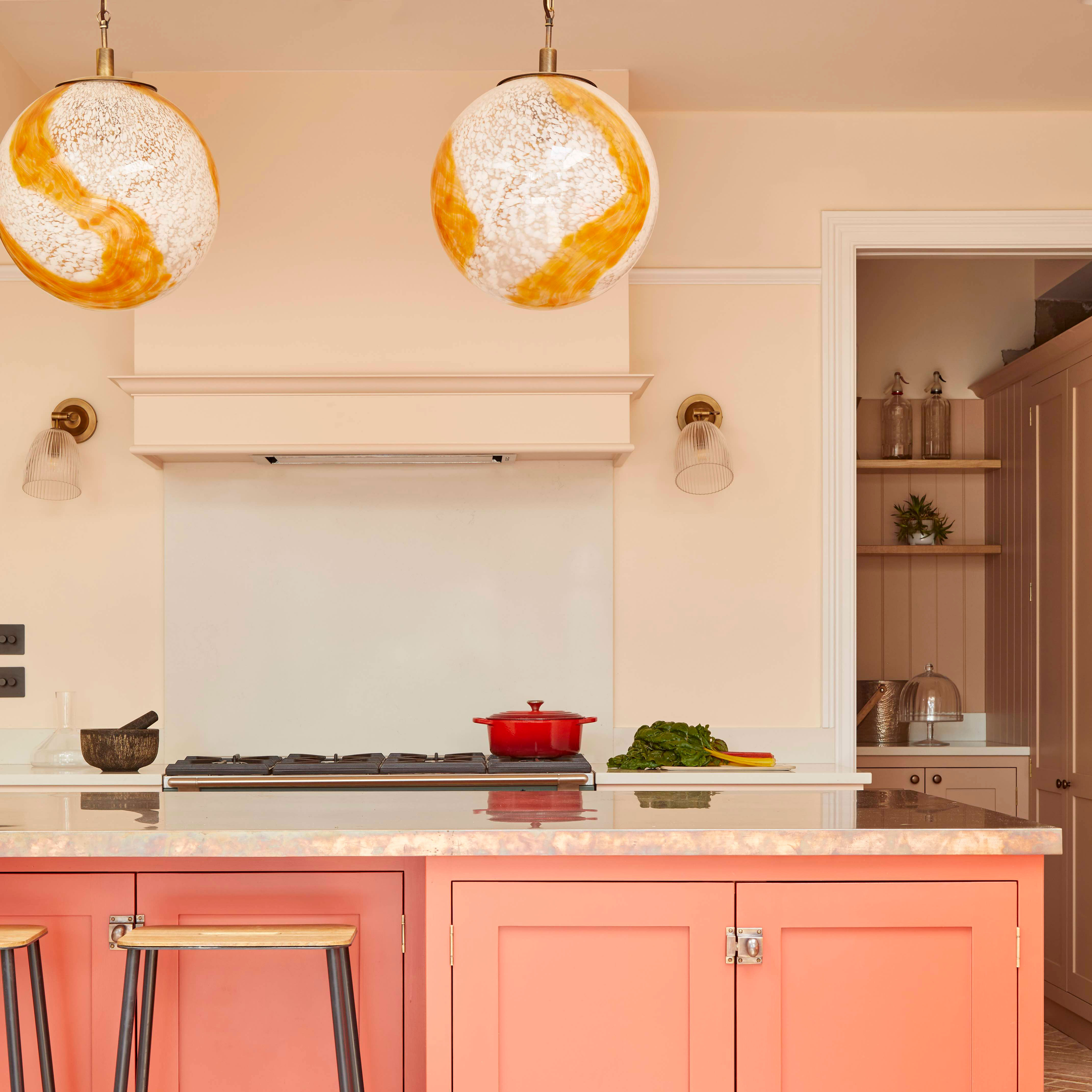
All too often, not enough thought is given to how to choose the right light bulb warmth – yet this is such an important factor to get right. Light temperatures range from cool, through neutral and into warm, with each offering different things.
Colour temperature is measured in Kelvins. Cool is 5000-6500K, neutral is 3500-4100K and warm is 2700-3000K. Cool light is a little like daylight and is great for task lighting, while neutral is a brilliant in dining areas as it tends to make food look really appetising. Warm light is cosy and fantastic when entertaining.
'I find the most comfortable and cosy temperature to be 2700K and it’s important to make this dimmable if you are entertaining and have an open plan kitchen/living area because bright lights can be too overpowering,' explains . Katerina Tchevytchalova, director and interior designer of K'Arte Design.
'I remember one new client of mine being in tears because her electricians had installed bright glary downlights in the ceiling of her classical rectory kitchen,' says Claire Pendarves. 'They gave out a cold light and weren’t dimmable. A perfect example of getting it wrong on several fronts.'
Not only does this three pack of bayonet bulbs offer fantastic value for money, they also give off a lovely warm glow thanks to the 2700K light – perfect for when entertaining.
5. Position lights to avoid shadows and reflections
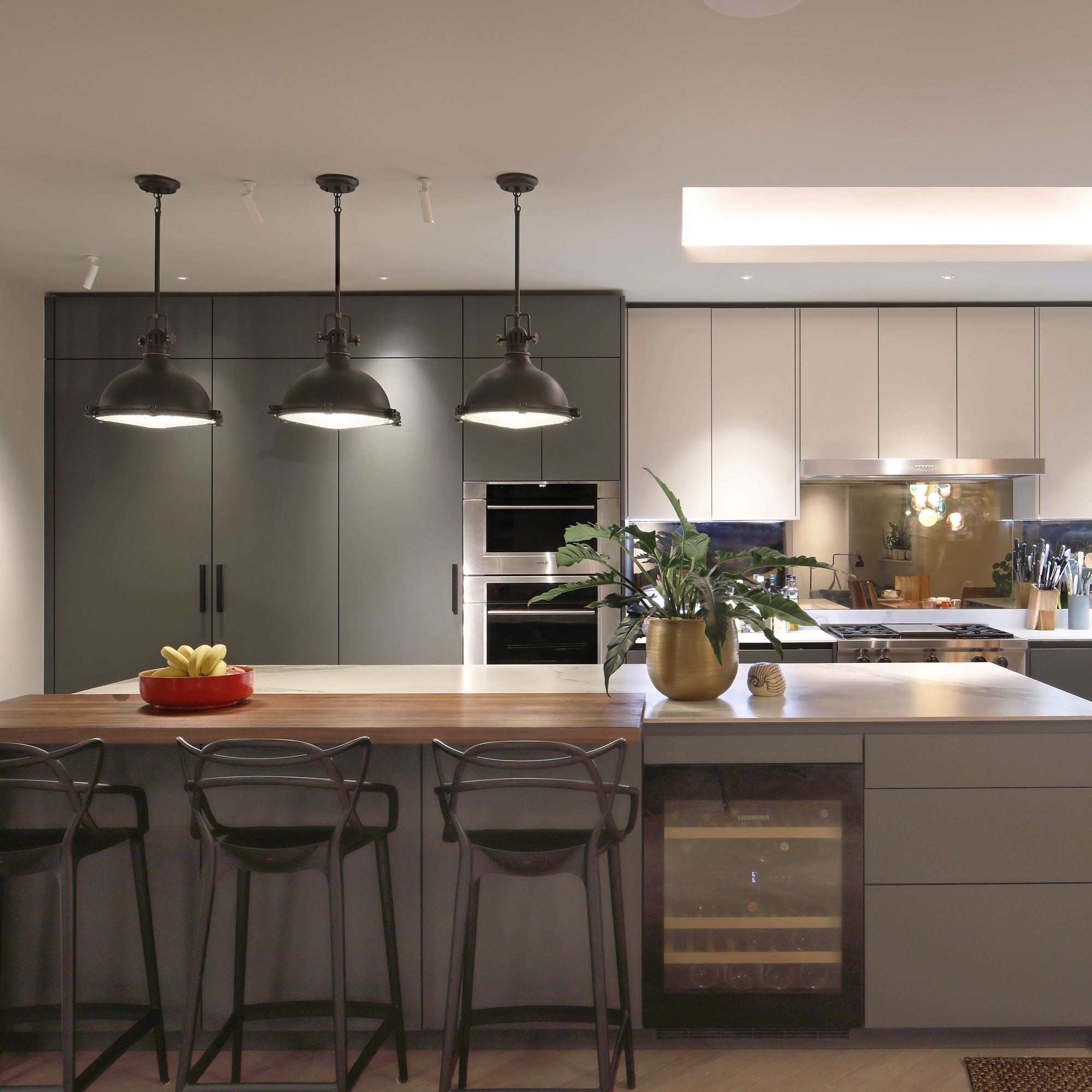
In practical spaces, such as within home offices, hobby rooms and, of course, kitchens, you need to ensure that lights are positioned to avoid glare and shadows, both of which will make it hard to carry out day-to-day tasks.
'Place lights in front of work areas, not behind you,' explains Katerina Tchevytchalova. 'For example, if lighting is behind you while you work on the counter, your body will cast shadows, making it harder to see.'
You should also avoid positioning lights in a way that they shine directly onto any reflective surfaces – or, take a look at the latest kitchen worktop trends and opt for those with a matt finish instead.
'Non-reflective surfaces help avoid reflections, especially if an LED strip is what you are after,' points out Sally Storey.
6. Illuminate your kitchen cabinets and shelves
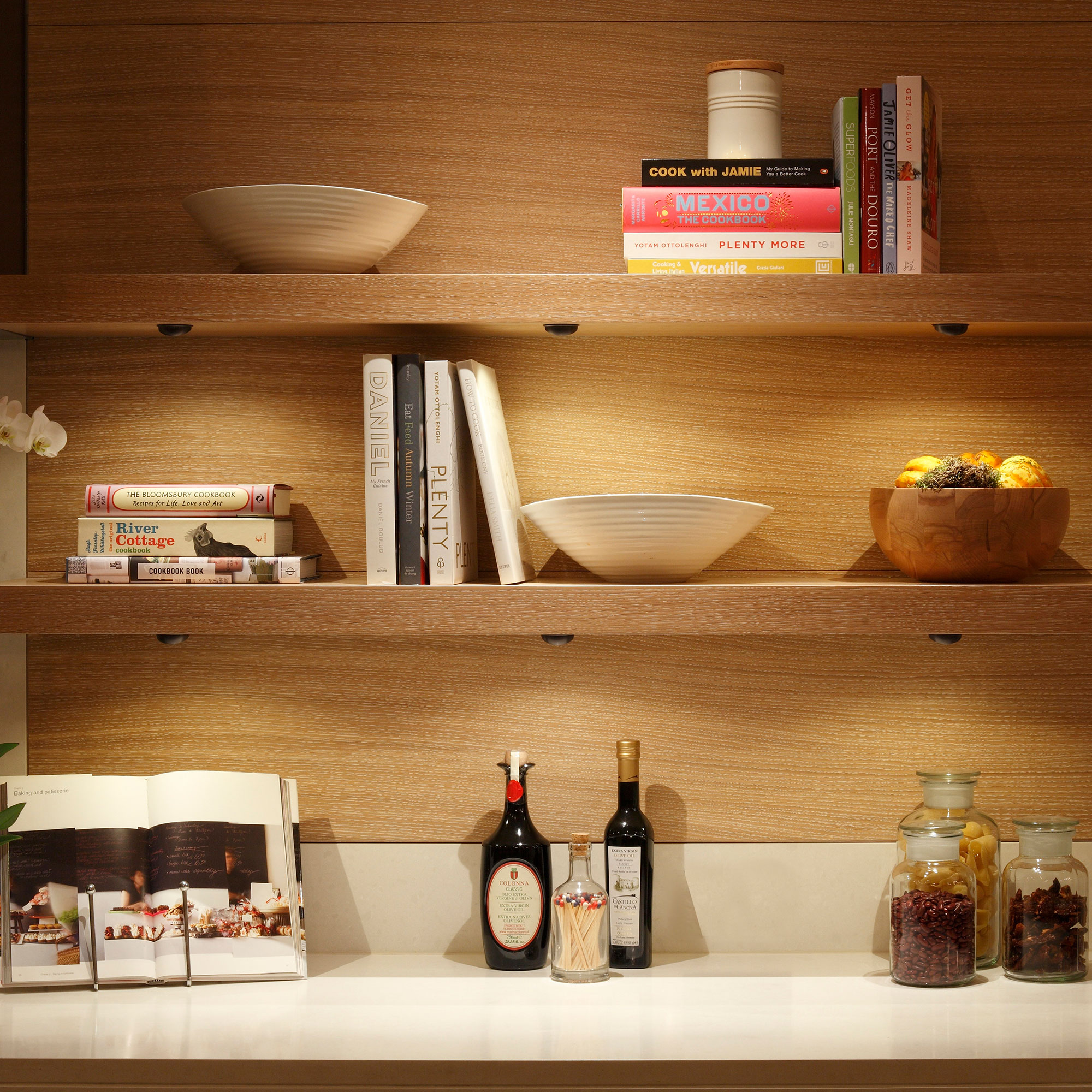
Alongside ceiling and wall lighting, don't forget the inside of your cupboards.
'Lighting inside closed cabinets is very practical, especially when it comes to low-level cabinets that are deep,' says Katerina Tchevytchalova. 'You can just open the door and be able to see what’s inside.'
'Neglecting lighting in glazed cabinets is a mistake, as it hinders the visibility of the items inside, resulting in shadows that can diminish their visual impact,' explains Molly Chandler. 'Meanwhile, thoughtfully positioned interior lighting not only accentuates the contents but also infuses depth and sophistication into the overall kitchen design.'
Obviously internal lighting works brilliantly with glass kitchen cabinet ideas, but it is also really handy in pantry cupboards and solid-fronted units when it comes to locating ingredients easily.
This kit has everything you need to set up your under-cabinet lighting on a DIY basis, including three LED puck lights, power adapter, a hub and even the screws needed for installation.
7. Use your lighting to help define zones
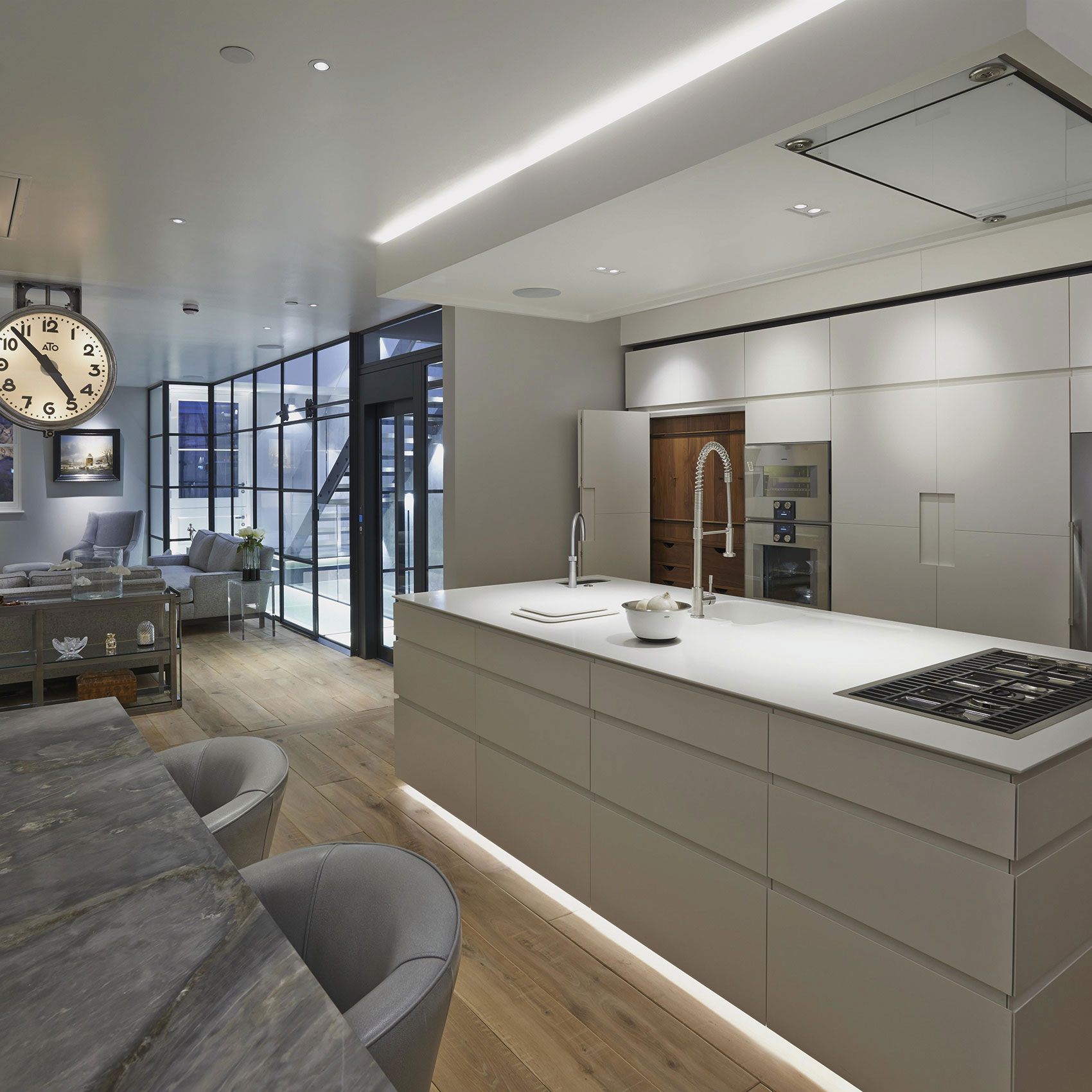
The majority of kitchens these days perform more than one function and this tends to translate into kitchen diner ideas or those that incorporate a living area – or both.
While an open plan kitchen diner is a highly desirable feature, it is a good idea to visually define the practical food preparation area from the relaxing dining spot using a few techniques – and your lighting scheme can help here.
'In big, open-space kitchens with dining and living areas, plinth lighting plays an important role,' says Sally Storey. 'It can help to link as well as separate the three different areas.'
8. Use smart lighting for total control
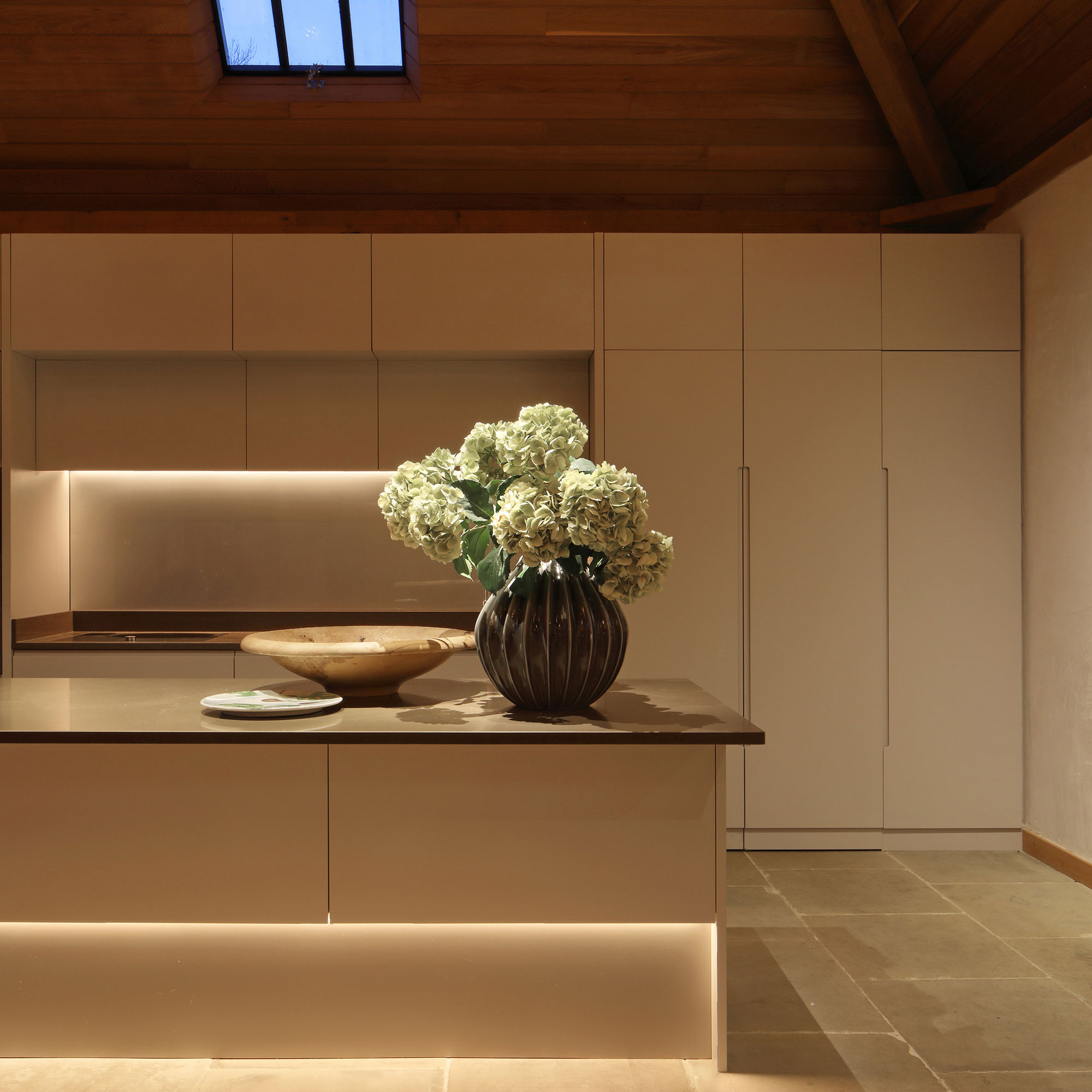
Smart lighting is become more and more commonplace in homes as people become familiar with the many benefits it can offer. In kitchens, smart lighting really can make life so much easier so do give some consideration to incorporating it – even a few simple smart bulbs could make all the difference to the way in which the space functions.
'Dimmable switches, or smart lighting systems are great for allowing flexibility in light levels, adapting the space for cooking, dining or socialising,' explains Molly Chandler. 'Today’s smart lighting solutions allow you to control lighting via apps, voice commands or timers, offering convenience and energy savings.'
Smart lighting systems are connected to the internet and are usually operated using an app on your smartphone or a device such as a tablet. You can also control them using smart speakers such as Alexa or Google Home. Smart lighting means you can control it even when you are not at home.
If you are new to the world of smart lighting then a smart bulb is an excellent place to start. This one is easy to connect to both Alexa and Google Assistant for voice control but can also be controlled using the Lepro app from your smartphone.
9. Design your kitchen island light with care
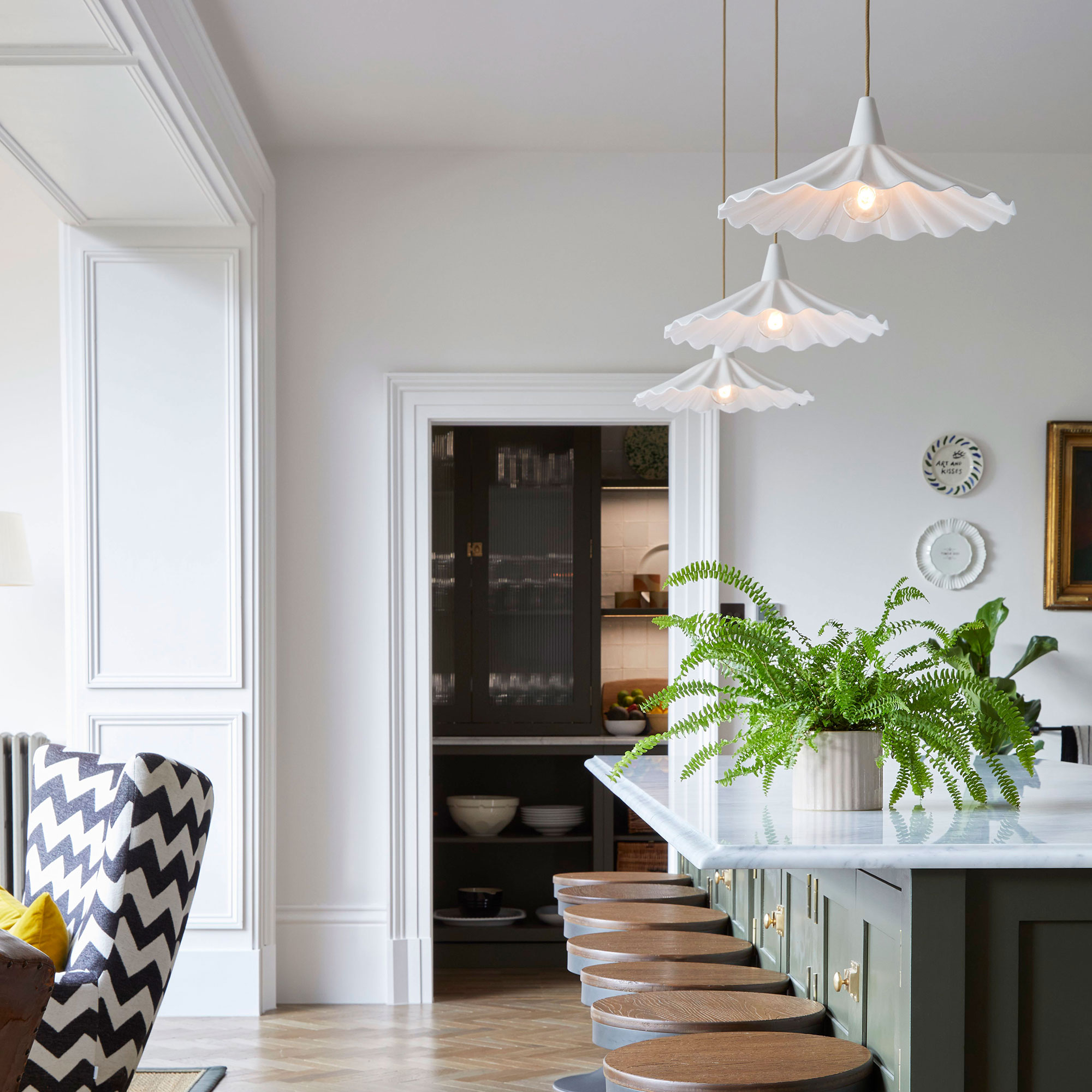
Kitchen island lighting really needs to be designed with how you plan on using the space as opposed to just following the latest kitchen island trends – if you are locating your hob and other appliances here, for example, you lighting needs will be different than if you wanted to use it for dining.
'An island can be one of the busiest areas of the kitchen, where you cook, eat, work and play, it is also the centre of the design, therefore lighting needs to look well-balanced and aesthetically pleasing, while also providing quality light for all cooking tasks,' explains Nicolle Whyte. 'Pendant lighting remains one of the most popular choices, but with an abundance of options, it can be tricky to know which style to choose.
'Remember to consider the size, purpose and material. How many pendants you choose, and the size, will be dependent on the scale of your island – so be sure to measure up and try out different designs to get an idea of proportions before fitting.
'Materials play a key part in the mood of the lighting, an opaque shade, for example ceramic, will offer directional light, whereas a transparent shade, such as glass, will provide a softer ambient light,' continues Nicolle. 'Don’t forget that pendant lighting allows you to add colour and interest to your kitchen design too, so don’t be afraid to go bold and make a statement. Finally, ask your electrician about fitting lighting with a dimmer, this will allow further versatility meaning they can double up as effective mood and task lighting.'
This pendant is made from mouth-blown glass, giving it a beautifully irregular finish. The green tinted glass would look perfect in both rustic kitchens as well as those with a more modern feel where it would add character.
Although this metal shade comes in lots of other finishes, we love the Green Brass tone for its slightly industrial look. The inside of these pendants is white meaning plenty of light is emitted into the room.
The elegant, classic design of this gently fluted pendant means it would be ideal used over an island that you plan on dining or entertaining at. Everything from its braided cable to the metallic finishes work perfectly.
10. Make sure to maximise natural light

Don't forget the many benefits of natural light in a kitchen – you really want to ensure you are bringing as much as possible streaming into your space, not only because it will help you see what you are doing, but also because it really can increase the sense of wellbeing you feel when spending time in the room.
'Natural light is something we all strive for more of within our homes, not only because it can make them feel brighter, but it also has an impact on our mental and physical health,' explains Nicolle Whyte. 'Depending on your kitchen size and shape, natural light can be limited and it’s not always possible to incorporate another window or skylight. However, there are small cost-effective adjustments you can make to harness natural light.
'Reflective surfaces bounce natural light around the kitchen, helping to give a feeling of space and airiness while also offering a contrast to matt materials within the design,' continues Nicolle. 'Consider incorporating glass-fronted cabinetry and natural stone worktops which both offer varied degrees of reflection. Another tip is to add a mirrored backsplash behind your cooker – a brilliant way to enhance light but also to reflect views beyond the room into other areas of your home or garden.
'If you are embarking on a new kitchen extension, discuss with your architect ways to incorporate natural light through glazing and don’t forget those sightlines – you want to be able to enjoy unique, interesting views which change with the seasons,' concludes Nicolle.
FAQs
What over the sink lighting works best?
The sink is an area of the kitchen that will really benefit from good task lighting. There are a range of fittings that can work well here, from directional spotlights on a track, to those that are individually placed to shine their beam exactly where you need it.
In some cases, pendants can work, but if you have a low or sloping ceiling over your sink, you are best off opting for flush or semi-flush fixtures.
Finally, you might like to consider two wall lights either side of the sink – preferably those that are adjustable.
How to put lights under kitchen cabinets?
Hidden lighting beneath both wall and base units in the kitchen is a great way to add a glow over work surfaces and to highlight your kitchen flooring ideas.
One of the easiest and most affordable ways to do this is to invest in some LED strip lighting, such as BERIXDEEP COB LED Strip Light from Amazon, which has self-adhesive backing and can be cut to size.
You can also have lights fitted beneath cabinets that are wired into the circuit to allow you to operate them alongside the rest of your lights from a switch on the wall – or as part of your smart lighting scheme.







